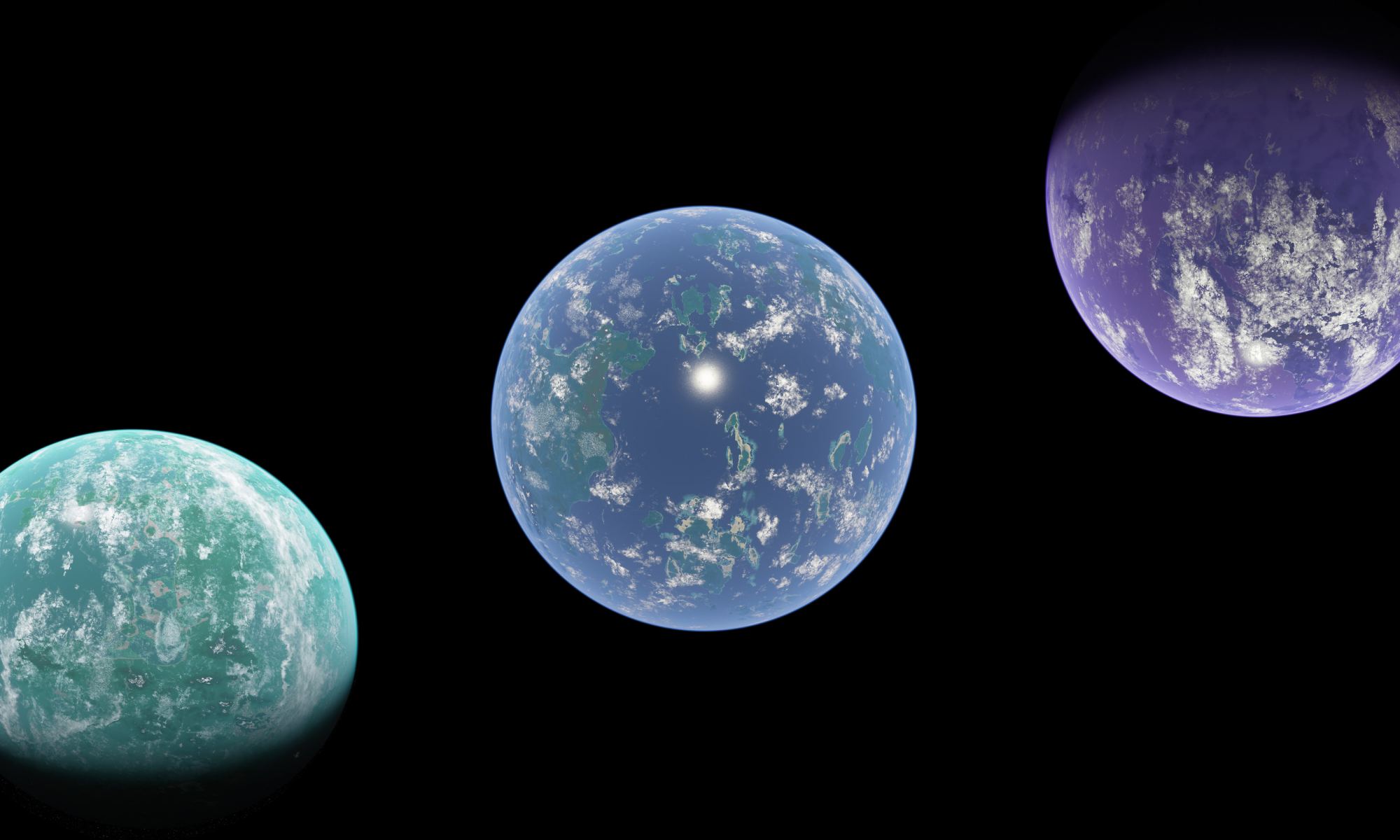“This is where we live. On a Blue Dot.” said Carl Sagan when the now famous Pale Blue Dot photo was released. Captured February 14, 1990 by the Voyager 1 Space Probe, Pale Blue Dot remains the most distant photograph of the Earth ever taken at 6 billion kilometers. This past February marked the 30th anniversary of Pale Blue Dot which was reprocessed using modern digital photo techniques creating an even more remarkable image.
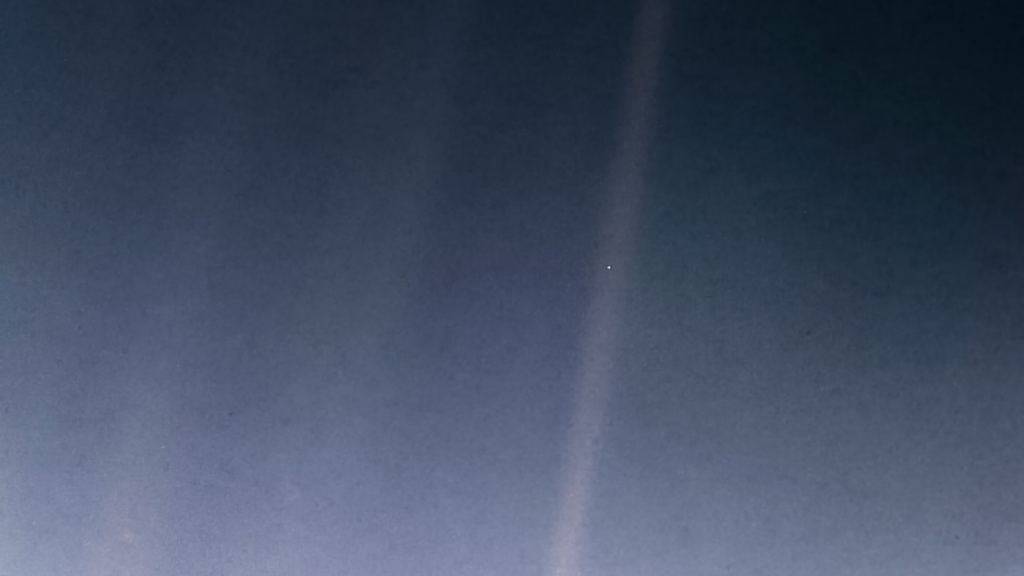
Whether Pale Blue Dot, or Blue Marble, our planet is associated with the color blue. As Earth is the only inhabited world we know of, it might stand to reason that other habitable planets in space will also be blue. But it’s a little more complicated than that.
What is Color?
By “color”, astronomers mean the intensity of light at a given wavelength. Light, which is electromagnetic (EM) radiation, moves like a wave through space just like ripples through water. The length of that wave determines its color. For example, EM radiation at wavelengths around 450 nanometers appear as the color blue to our eyes.
But what we humans generally think of as color represents only a small portion of the overall wavelengths of the EM spectrum. Telescopes can perceive different parts of the spectrum outside of what our eyes see, such as ultraviolet or infrared, which can also be thought of as “color”. The night sky would be much brighter to our eyes if we could see the entire range of the EM spectrum.
The upcoming James Webb Space Telescope can detect the infrared part of the EM spectrum. Infrared penetrates interstellar dust and gas more easily than visible light allowing James Webb to see through obstructions.
Now here’s where it gets exciting – color can actually tell us a lot about an object. The color of a star relates to its surface temperature. Red stars are cooler while blue stars are hotter. Color also tells us what something is made of. The color of an atmosphere indicates what’s in the air. The color reflecting off a surface tells us what that surface is. The color arriving from an object in space is usually a blend of several colors.
More than just blue, Earth is a mix of different colors each representing various surfaces and gases on our planet. Each surface or atmospheric gas leaves its unique “signature” on the wavelength of sunlight striking them resulting in a change of color. When white sunlight strikes a plant, the chlorophyll absorbs part of the sunlight for energy but reflects green and infrared light back into space. The science of this interaction between light and matter is called spectroscopy.

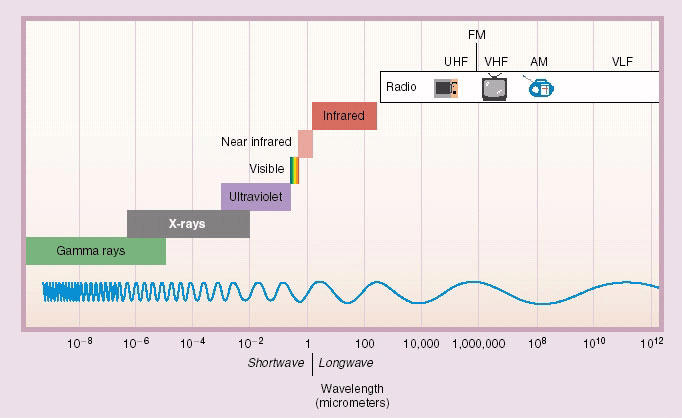
What about a distant world – an exoplanet – around another star? The color of a distant world can tell us about its habitability. In the absence of being able to warp or hyperspace to these planets, we use information they’ve sent to us at the speed of light instead.
But there are two key challenges to the spectrographic study of distant Earth-like exoplanets. First, our current generation of telescopes doesn’t have the resolution required to distinguish the light of an Earth-sized planet from that of its parent star over the vast distances we’re observing them (remember how small Earth looked at 6 billion kilometers never mind hundreds of trillions). The light of the planet and star blurs together.
We know that exoplanets are out there, what size they are, if they are terrestrial worlds, and what kinds of stars they orbit, but we can see little else about them right now.
Secondly, even when our telescopes are powerful enough to closely examine the light of an individual planet, we don’t have a color chart to help discern what we’re seeing out there – no point of reference. We don’t actually know what “Earth” would look like from hundreds of light years away orbiting another star. Earth itself would appear a different color under a red or blue sun.
Thankfully, both challenges are being met.
A new generation of high-resolution telescopes is on the horizon. Space telescope missions like James Webb, HabEx, and LUVOIR; as well as land-based telescopes like the Giant Magellan Telescope will have the resolving power to separate the light of a relatively tiny dim planet from that of its titanic blazing parent star.
In anticipation of this increased telescope power, Jack Madden – Ph.D. candidate in Astrophysics at Cornell University, has created a color guide of Earth-like worlds orbiting other stars. This guide, created using computer simulations, can be used to interpret the colors we’ll see from distant worlds to determine if they’re potentially habitable.
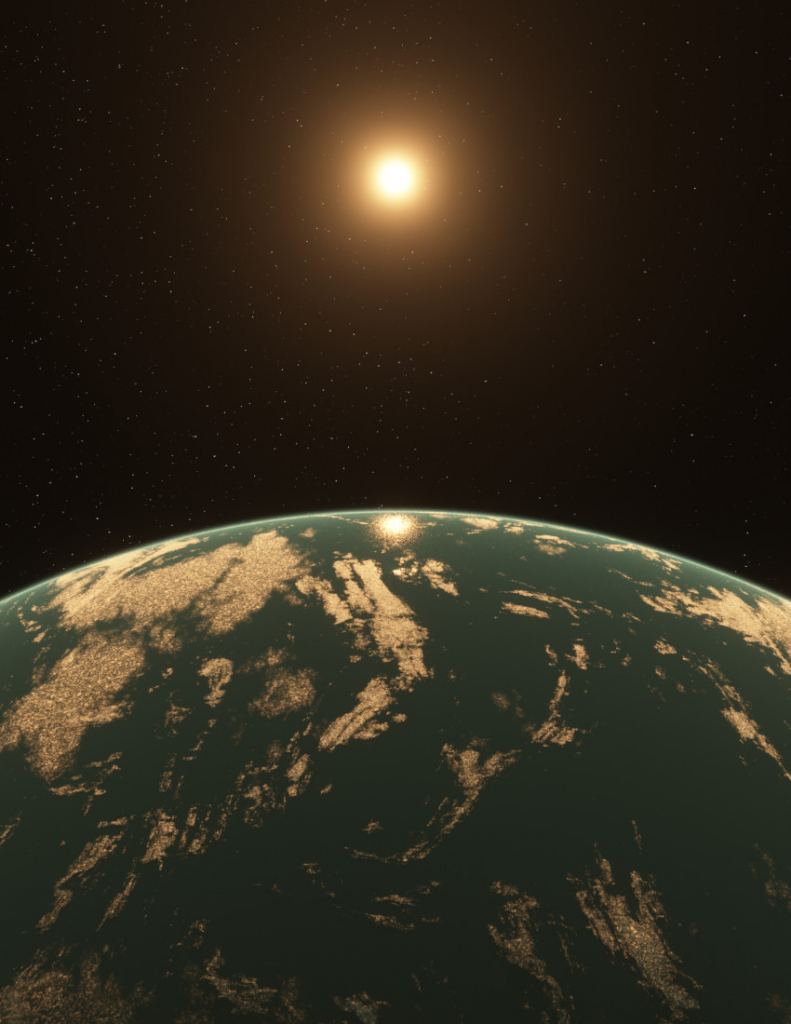
Under the red light of its star it produces a greenish tinge
– Image and image description by Jack H. Madden used with permission
Madden created simulated “Earths” using combinations of surface types from our own planet including seawater, basalt, granite, sand, trees, grass, snow, and clouds. Some of the planets were simulated using a single surface type such as jungle/forest planets (like Endor’s Forest Moon in Return of the Jedi), snowy worlds (like Hoth in Empire Strikes Back), desert worlds…(Tatooine in New Hope), or a combination of several surface types like we find on Earth. Variants of each planet were simulated including 70% ocean coverage similar to Earth as well as worlds with and without atmospheric cloud cover of 44% matching Earth’s average cloud cover.
These simulated planets were then placed in a Habitable Zone orbit of simulated stars – the zone where the planet receives enough energy from the star to maintain liquid water like Earth. These simulated stars featured surface temperatures from 3,900 Kelvin to 7,400 Kelvin corresponding to 12 different star classes and subclasses through F, G, and K-class stars.
This range accounts for stars cooler and redder in color than our Sun – which is class G and about 5,770 Kelvin – and hotter bluer stars. Even cooler stars – class M – are ruled out because their planets must orbit so closely to their parent stars to support life that they are in danger of exposure to solar flares as well as being tidally locked such that the same side of the planet always faces the parent star.
In total, 30 different surface types were simulated around 12 stars and resulted in the color spectra of 360 terrestrial planets with wavelengths ranging from 0.4 to 20 microns (400 to 20,000 nanometers corresponding to the spectrum of visible light through to infrared).
“Earth is our only example of a habitable world. The better prepared we are to find something not like Earth but still capable of supporting life the sooner we could find signs of it…Once we have telescopes capable of finding signs of life in a distant atmosphere we’ll have a diverse set of models to compare against. Based on the conditions we observe we’ll know which surface types could exist there to support temperatures for liquid water.”
-Jack H. Madden
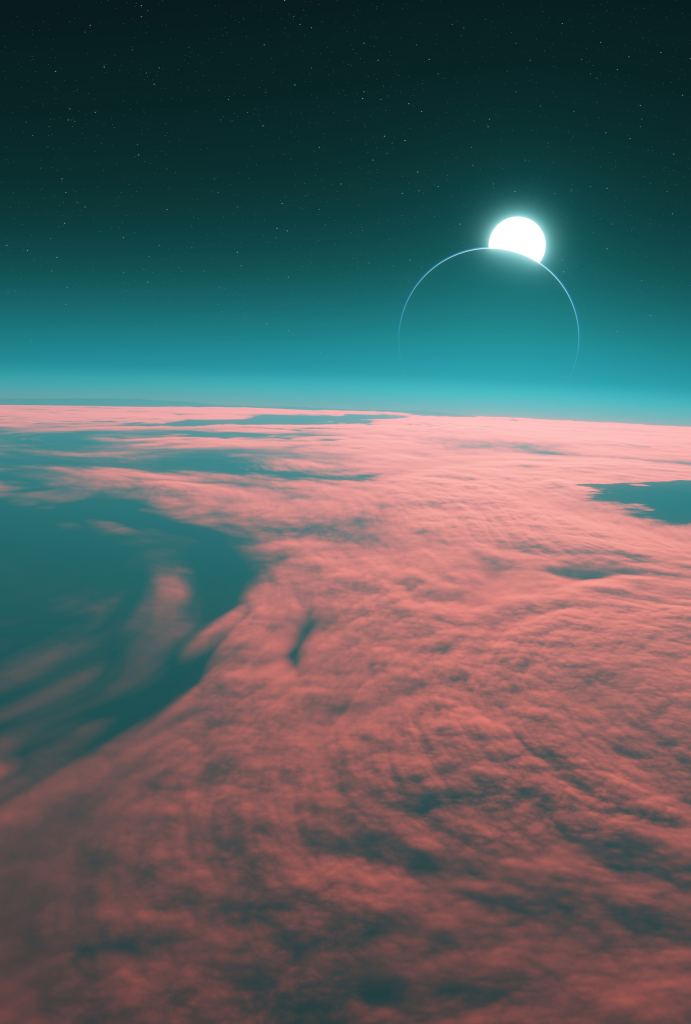
create a fiery view for observers at the proper viewing angle.
– Image and Image description by Jack H. Madden used with permission
The Colors of Habitability
The simulated planets create a color reference for future exoplanet hunting super telescopes. Comparing the spectra of future exoplanet observations to the simulated Earth-like planets helps determine if we’re seeing a clouded jungle world, an ocean planet, an airless rock, or a multi-surfaced continental world like Earth orbiting various stars.
The simulations also revealed other interactions between the planet’s surface and the incoming light from its parent star. For example, although cooler stars output less energy than hotter stars, they are actually more efficient at heating Earth-like worlds because a greater portion of their energy is released as infrared radiation.
Various surfaces, depending on how they absorb or reflect the light of a given star, also influence the surface temperature of the planet. Blue surfaces will remain cooler in blue starlight while red surfaces will absorb more blue light and therefore heat.
The color contrast of the planet changes depending on surface features as well. A desert planet orbiting a dimmer K-class star could be twice as bright as an ocean planet orbiting a brighter F-class star since seawater tends to be less reflective than sand.
Ultimately the surface type of a planet can have a significant impact on the surface temperature and habitability and change how visible the planet is to our telescopes when orbiting a given star. This information can help plan which stars we intend to observe with our future super-telescopes or which exoplanets we revisit with our enhanced resolving power.
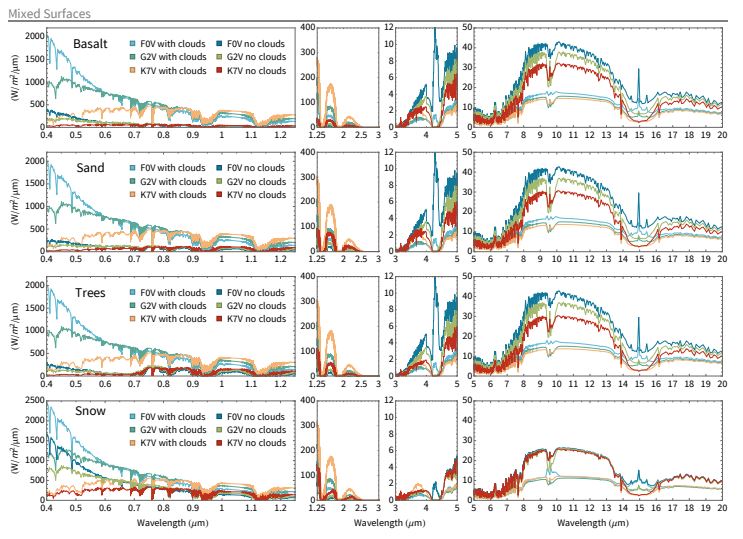
The Presence of Life
The light reflected from a planet’s atmosphere also tells us about the atmospheric composition. As starlight passes through the atmosphere, the light is changed by the presence of different gases which can be detected by telescopes.
By simulating all these worlds, the results yield how to detect gases like methane and oxygen in a distant planet’s atmosphere. Typically, methane and oxygen cancel each other out so their continued coexistence in a planet’s atmosphere, like on Earth, could be a sign of biological processes where biology replenishes one or both gases.
Vegetation can also be observed at a distance through an effect called the “red-edge” near 700 nanometers – the color red and into the near-infrared. At this wavelength, a strong increase in reflectivity is shown by simulated planets covered in trees. Vegetation on Earth reflects infrared light as a protection against overheating during photosynthesis.
There are some cool possibilities that Madden says are not yet accounted for in the models. For example, it is unclear how the spectrum of a planet might be changed if, in addition to reflecting light, the planet is emitting its own light. This light could be, for example, the result of bioluminescent organisms on the planet’s surface (think the moon Pandora in Avatar). These are possibilities that may yet be discovered by our planet-hunting endeavours.
In addition to exoplanet spectroscopy, Madden also models these distant worlds through digital artwork. A sample of his work makes up the amazing exoplanet images in this article including the feature image. I love when the arts and sciences collide. As an astrophotographer, I believe art is a powerful channel of science communication. Madden’s stellar art can be found on his website jmadden.org – insight into what a real-life planet hunter dreams we may find among the stars:
Author’s note: Big thanks to Astronomer Kat Kelly at Oxford University for spectroscopy insights for this piece too – admittedly not my forte when it comes to astronomy knowledge.
More to Explore:
The Color of Habitability – Dissertation by Jack Madden
Tour of the Electromagnetic Spectrum (NASA)
Rise of the Super Telescopes: The Giant Magellan Telescope – Universe Today
James Webb is Working Perfectly! On the Ground. Next Trick: Doing it From Space – Universe Today
The Search for Superhabitable Planets Even More Habitable Than Earth – Universe Today

